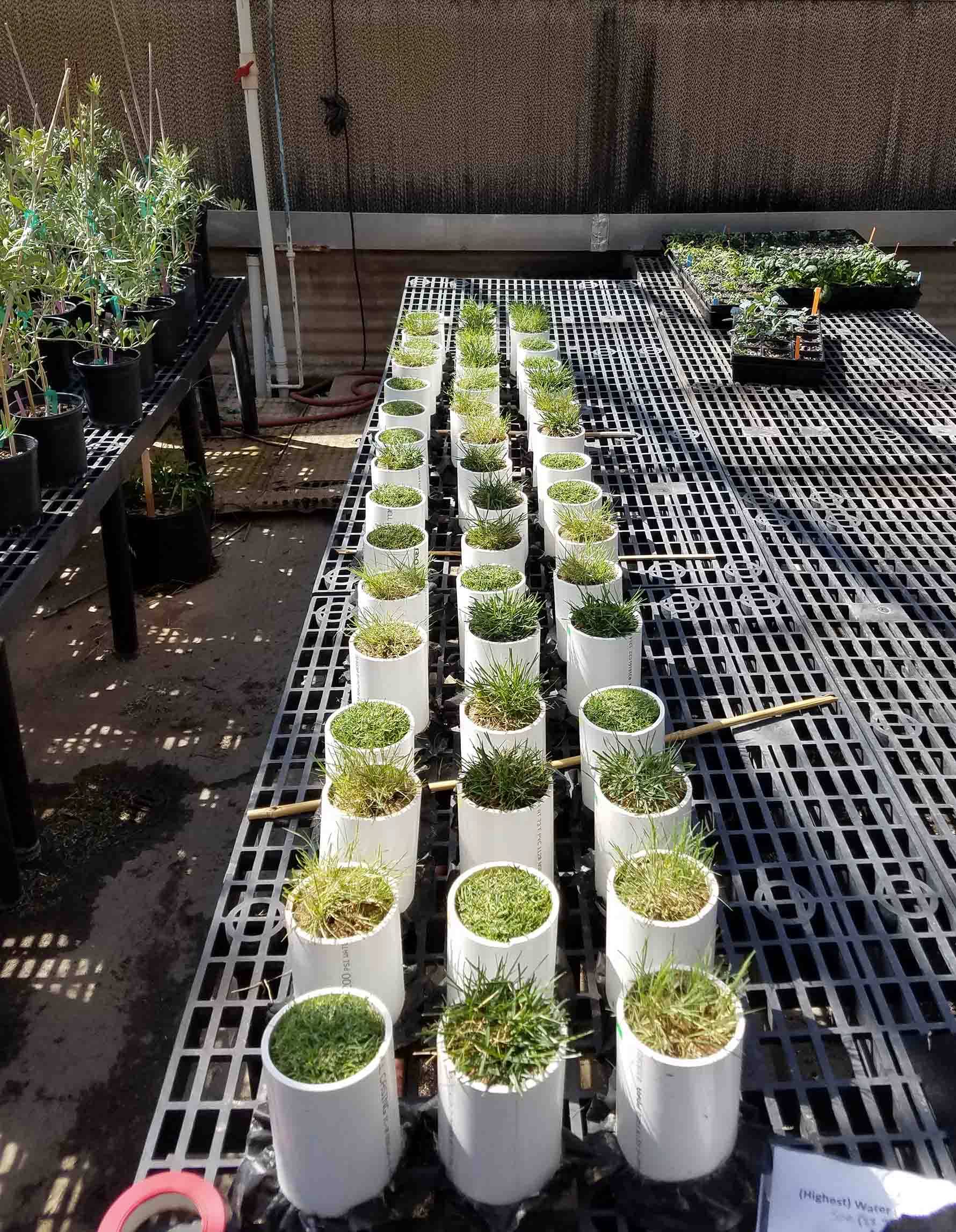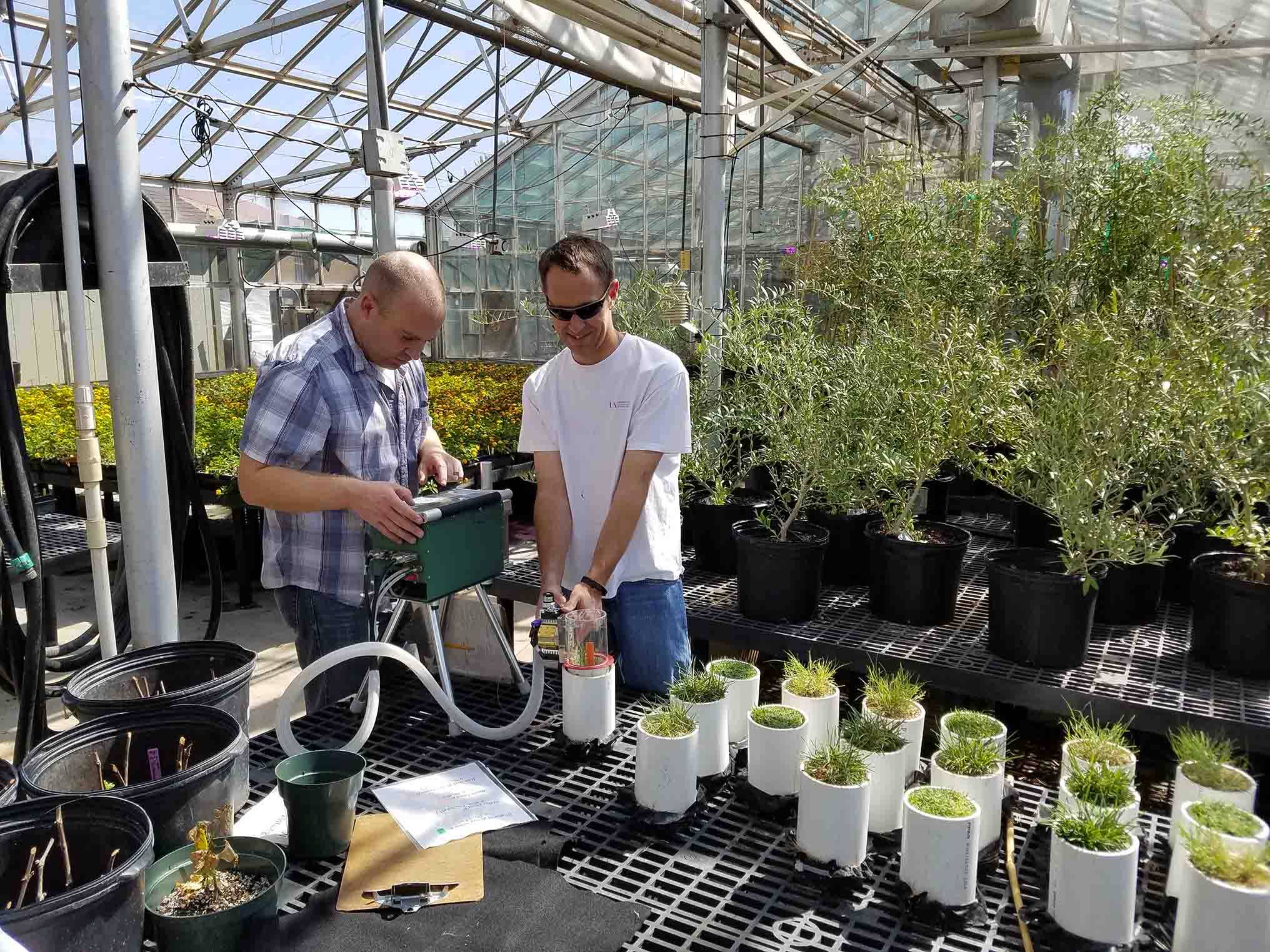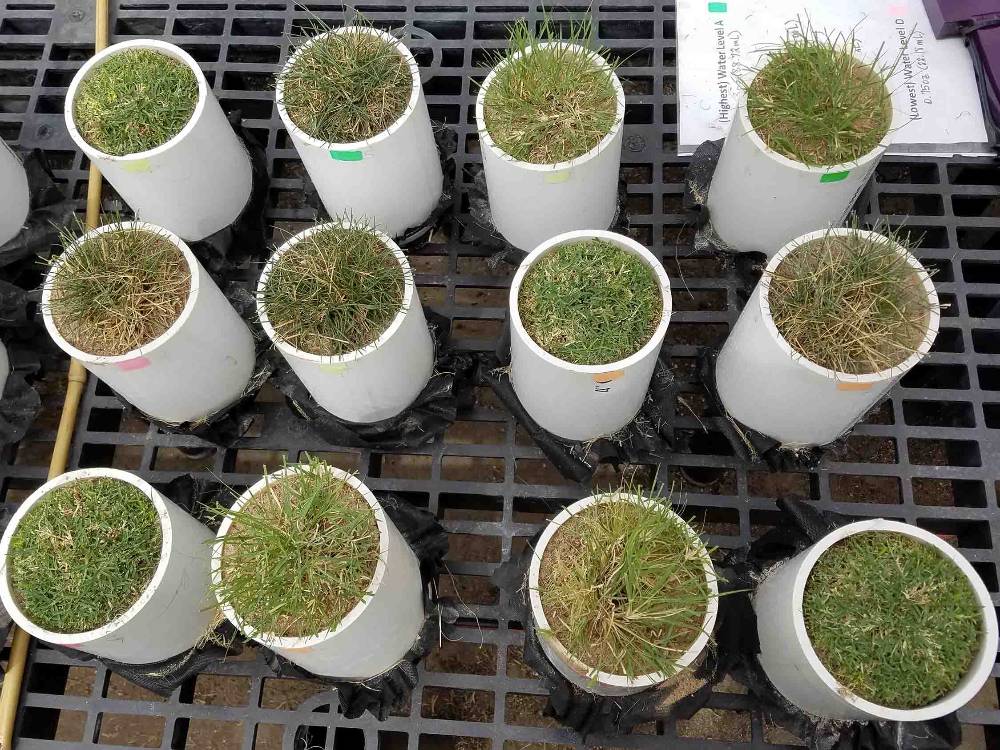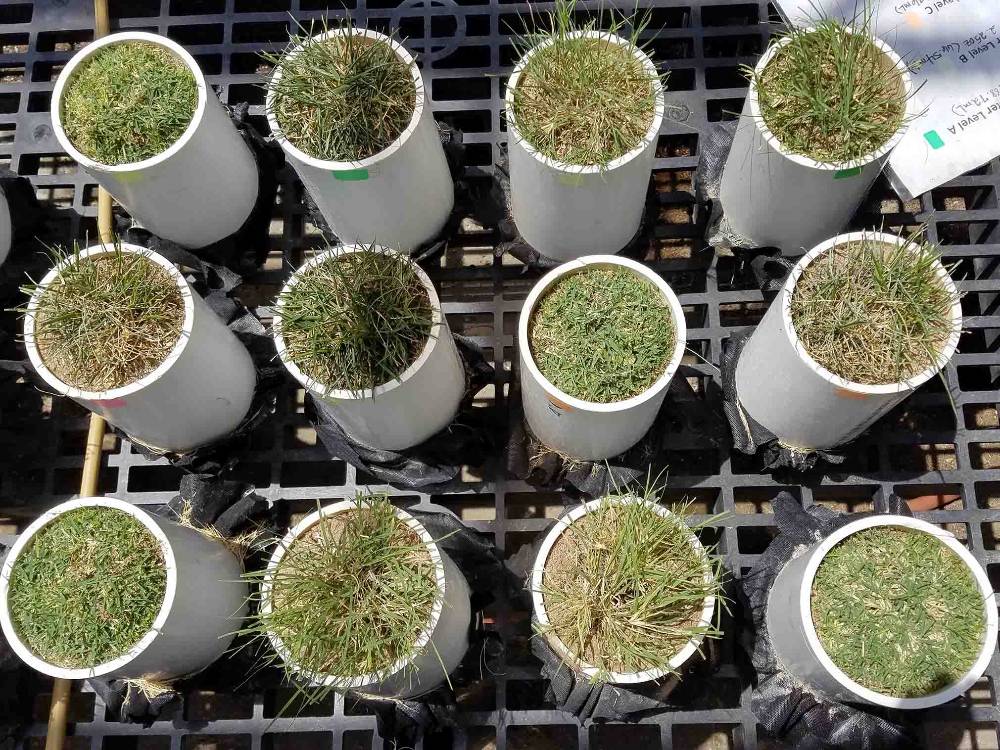Evaluating Grasses
Chronic Water Stress Evaluation
1. Chronic water stress evaluation being conducted in Plant and Soil Science Greenhouses on commonly planted residential turfgrasses. This is the 2nd run of the experiment
to determine water requirements of a bermudagrass, buffalograss, and tall fescue grown
under four levels of irrigation. These plants have been kept well-watered to this
point for initial data collection, but variable irrigation will start tomorrow. Which
grass will have the most success? Follow along on Twitter @TTUturf or our TTU Turf Blog.
April 2017
2. Dr. Young and PhD student Travis collecting photosynthetic measurements on common
residential turfgrass species in Plant and Soil Science Greenhouses. This is a portion
of a chronic drought stress evaluation they are conducting to identify the water requirements
for bermudagrass, buffalograss, and tall fescue commonly planted in lawns around Lubbock.
April 2017
3. With two days of no water applied to grasses, warm-season grasses hanging strong
and showing little evidence of drought stress. Tall fescue (middle row, far right
and two pots on the left; second pot from left on top row) struggling with greenhouse
heat and little water in the sand-dominated rootzone. April 25, 2017
April 25, 2017
4. After applying the water treatments yesterday: Tall fescue getting 2.5 or 3 oz.
of water improved dramatically (second pot from left in middle and top row); Tall
fescue receiving 1.5 or 2 oz. is doing a little better, but still under heavy stress
(middle row far left and far right, respectively).
Symptom shown with leaves becoming thin and necrotic is called leaf firing. April 26, 2017
April 26, 2017
All Images Courtesy of Joey Young
Related Links
[ Back]
Department of Plant and Soil Science
-
Address
Texas Tech University, Department of Plant and Soil Science, Box 42122, Lubbock, TX 79409 -
Phone
806.742.2838 -
Email
psstechsupport@ttu.edu
